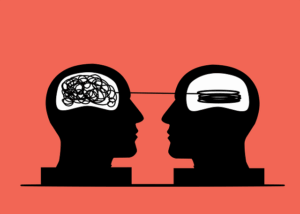Stress relief therapy combines cognitive behavioral techniques (CBT), mindfulness practices, physical activity, creative outlets, and social support to equip individuals with powerful coping strategies against stress. CBT identifies and changes negative thought patterns, while mindfulness trains the mind to focus on the present moment. Physical activity releases endorphins, and creative outlets provide emotional expression avenues. Social support networks buffer stress, foster resilience, and promote oxytocin release. Integrating these techniques into daily life creates a personalized toolkit for managing stress proactively.
Stress relief therapy is a powerful tool for enhancing mental well-being. This comprehensive guide explores various therapeutic stress coping mechanisms, providing insights into effective strategies for managing stress. From mindfulness techniques and cognitive behavioral therapies to physical activity, relaxation methods, creative outlets, and the power of social support networks, each section delves into proven approaches designed to integrate stress relief therapy seamlessly into daily life.
Understanding Therapeutic Stress Coping Mechanisms

Therapeutic stress coping mechanisms are techniques and strategies designed to help individuals manage and reduce stress levels, promoting overall well-being. These mechanisms go beyond mere relaxation; they are structured tools that enable people to confront and overcome stressors effectively. Through various therapeutic approaches, such as cognitive behavioral therapy (CBT), mindfulness practices, or exposure therapy, individuals learn to identify triggers, challenge negative thoughts, and develop healthier coping strategies.
Stress relief therapy focuses on empowering folks to navigate life’s challenges with resilience. By understanding their unique stress responses, individuals can choose the most effective coping mechanisms tailored to their needs. This personalized approach fosters a sense of control, enhances emotional regulation, and ultimately contributes to improved mental health and quality of life.
The Role of Mindfulness in Stress Relief Therapy

Mindfulness, a practice that originated from ancient meditative traditions, has emerged as a powerful tool within stress relief therapy. It involves training the mind to focus on the present moment, observing thoughts and sensations without judgment. This simple yet profound practice can significantly enhance individuals’ ability to manage and reduce stress levels.
In the context of therapy, mindfulness encourages individuals to become more aware of their bodily sensations and emotions as they arise, allowing them to respond rather than react to stressful situations. By fostering a non-judgmental awareness, mindfulness promotes a sense of calm and clarity, enabling individuals to navigate challenging circumstances with greater resilience. This practice has been shown to reduce symptoms of anxiety and depression and improve overall well-being, making it an integral component of modern stress relief therapy approaches.
Cognitive Behavioral Techniques for Managing Stress

Cognitive Behavioral Techniques (CBT) offer powerful tools for managing stress and are a cornerstone of stress relief therapy. This approach focuses on identifying and changing negative thought patterns that contribute to stressful feelings. By challenging distorted thinking, individuals can gain a more balanced perspective, leading to reduced anxiety and improved coping mechanisms. CBT encourages the development of healthier behaviors and problem-solving skills, empowering people to navigate stressful situations with greater resilience.
One of the key strengths of CBT is its ability to provide practical strategies for stress management. Techniques include mindfulness exercises, which help individuals focus on the present moment, reducing rumination on past or future worries. Additionally, cognitive restructuring techniques assist in replacing negative self-talk and catastrophizing thoughts with more realistic and positive ones. These evidence-based methods have been extensively studied and proven effective in various settings, making CBT a sought-after approach for those seeking lasting stress relief therapy solutions.
Physical Activity and its Impact on Stress Reduction

Physical activity is a powerful tool in the arsenal of stress relief therapy. Engaging in regular exercise, from a gentle walk to high-intensity interval training, triggers the release of endorphins and other neurochemicals that promote feelings of happiness and well-being. This natural high can significantly alleviate stress and anxiety, providing an effective coping mechanism for individuals seeking alternative ways to manage their mental health.
Beyond the physiological benefits, physical activity offers a mental escape from stressful thoughts. Whether it’s running in nature or practicing yoga, these activities encourage mindfulness, helping individuals focus on the present moment rather than ruminating on stressors. The combination of increased heart rate and deep breathing during exercise further enhances relaxation, making it an excellent method for stress reduction and overall mental health maintenance.
Relaxation Methods: Deep Breathing and Progressive Muscle Relaxation

Deep breathing and progressive muscle relaxation are two powerful tools within the realm of stress relief therapy. Deep breathing involves taking slow, controlled breaths, which can activate the body’s natural rest-and-digest response, helping to calm the mind and reduce feelings of anxiety. This simple yet effective technique is easily accessible and can be practiced anywhere at any time, making it a go-to stress coping mechanism for many.
Progressive muscle relaxation, on the other hand, systematically tensing and then releasing different muscle groups in the body, promotes a state of profound relaxation. By focusing on physical sensations and gradually letting go of tension, individuals can achieve a mental quietude that enhances overall well-being. This method is particularly beneficial for those dealing with chronic stress or high-pressure situations, offering a structured approach to manage and reduce stress levels effectively.
Creative Outlets as Stress Coping Strategies

Creative outlets offer a powerful means of managing and alleviating stress, serving as effective stress relief therapy. Engaging in artistic pursuits like painting, writing, or playing music allows individuals to express their emotions and thoughts in unique ways, providing an outlet for pent-up feelings associated with stressful situations. This process can be immensely therapeutic, helping to calm the mind and foster a sense of tranquility.
By channeling their energy into creative activities, people can take a much-needed break from the demands of daily life and temporarily escape the grip of stress. This form of self-expression facilitates emotional processing, enabling individuals to gain new perspectives on challenging experiences. Moreover, creative outlets encourage mindfulness, helping one to stay present in the moment and appreciate the therapeutic benefits of artistic engagement.
Social Support Networks and Mental Well-being

Social support networks play a pivotal role in stress relief therapy, acting as a cornerstone for maintaining mental well-being. These networks, comprising family, friends, and community members, offer a safe space to share feelings, seek advice, and receive emotional reinforcement. The presence of strong social connections can significantly buffer the negative impact of stressful events, fostering resilience and coping strategies that enhance overall psychological health.
The benefits extend beyond emotional support; social interactions stimulate the release of oxytocin, often referred to as the ‘love hormone,’ which promotes feelings of calmness and reduces anxiety. Moreover, engaging in meaningful conversations and shared activities within these networks can provide a sense of belonging and purpose, further contributing to stress reduction and improved mental well-being.
Integrating Therapeutic Stress Coping Mechanisms into Daily Life

Integrating therapeutic stress coping mechanisms into daily life is a transformative process that empowers individuals to manage and reduce their stress levels effectively. These strategies, often learned through stress relief therapy, are designed to be practical and adaptable to various situations. By incorporating techniques such as mindfulness, deep breathing exercises, or engaging in physical activities, one can create a personalized toolkit for navigating stressful moments. Such practices not only provide immediate stress relief but also foster resilience over time.
Daily integration involves setting aside dedicated time for these coping mechanisms, whether it’s beginning the day with a mindful morning routine or ending it with reflective journaling. Incorporating stress-reducing activities like yoga, meditation, or even short walks in nature can significantly impact one’s overall well-being. The key lies in consistency and making these practices a habit, allowing individuals to proactively manage their stress response and cultivate a sense of calm amidst life’s challenges.
